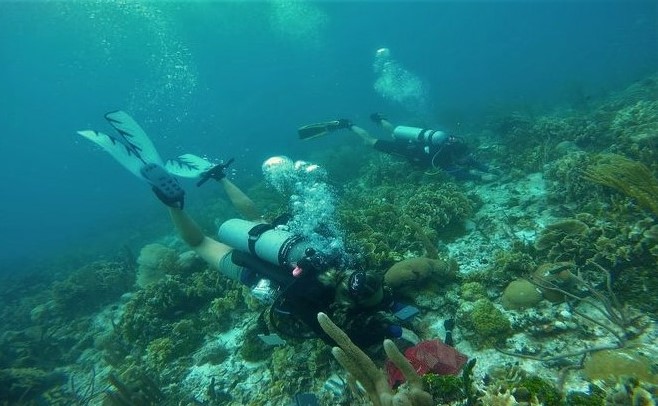Discovering how coastal ecosystems work—to keep them working
 Climate change and biodiversity loss pose existential challenges to the health of marine ecosystems and the people who depend on them. Yet our scattered knowledge of marine life hampers our ability to effectively address them.
Climate change and biodiversity loss pose existential challenges to the health of marine ecosystems and the people who depend on them. Yet our scattered knowledge of marine life hampers our ability to effectively address them.
The Smithsonian is committed to solving this challenge. The Marine Global Earth Observatory (MarineGEO) is a unique network of partners around the world dedicated to tracking the vital signs of coastal marine life, diagnosing the causes of change, and informing science-based solutions to build coastal resilience—all using standardized, coordinated methods. Led by the Smithsonian’s Tennenbaum Marine Observatories Network, MarineGEO coordinates the research of partner observatories and project collaborators that span the globe.
Our research focuses on biodiversity because it is the heart of functioning ecosystems, but is missing or poorly coordinated in most marine observing. We focus on coastal systems nearshore because this is where biodiversity and people are concentrated and interact most.
MarineGEO is also a community—the network is people. Our value proposition to partners is: The Smithsonian helps elevate your science and grow your professional network to take local science global and to accomplish outcomes none of us could reach alone.
Learn more about MarineGEO by viewing our values, who we are, our governing documents, and current opportunities.
Why Smithsonian?
- Global leader in biodiversity science, with the world’s largest biological collections.
- Leading institution for research on diverse tropical ecosystems.
- Long-term leadership in research about ‘ecosystems on the edge.’
- An overarching focus on advancing sustainability and discovery to help people and nature thrive together.
- Unparalleled outreach and public engagement, public education, and convening power.
